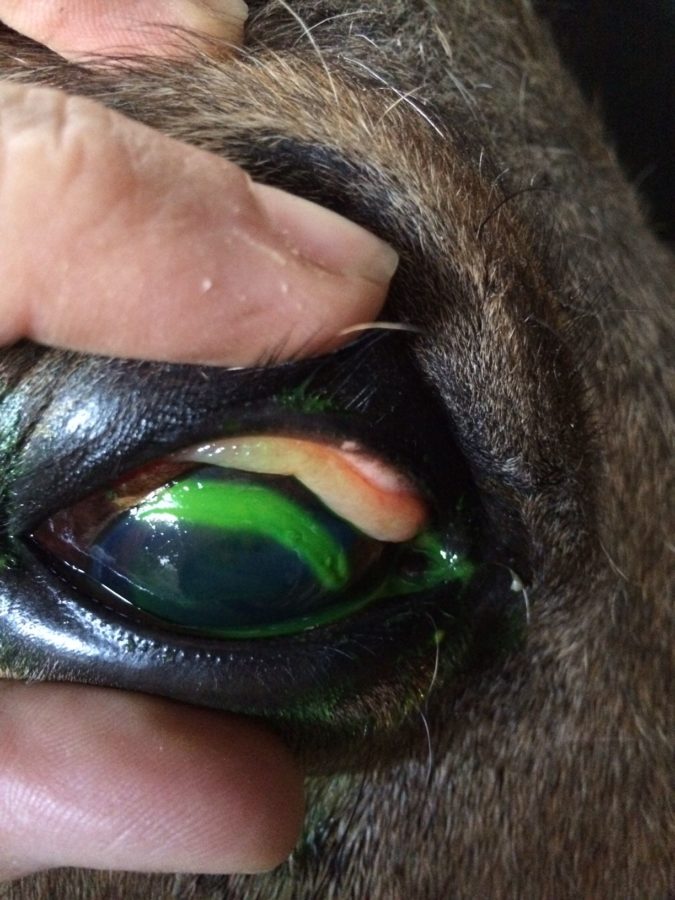Ophthalmology
One of the common emergencies that we encounter in equine practice is a call for a swollen, weepy eye. These symptoms can point to a couple of different ocular problems, and a thorough exam is needed to arrive at an accurate diagnosis.

A corneal ulcer can initially appear similar to conjunctivitis. The lids may be swollen, the eye is squinting, and there is usually discharge. In an eye that has an ulcer, however, when a special stain is applied to the cornea it sticks to the damaged cells and shows up as a bright green area. The presence of a corneal ulcer changes the medication used for treatment. Systemic anti-inflammatories are still used, but the eye ointment will not contain any steroids, as they can slow healing of an ulcer. Instead, topical antibiotics will be used. Topical atropine is also commonly used to dilate the pupil, as the pupil in a painful eye will often be constricted. Complicated cases or those that do not heal despite initial treatment may require a different antibiotic or the addition of an anti-fungal drug.
Another ocular problem seen in horses is uveitis, which means inflammation of the eye. While this may not cause swollen lids, the front chamber of the eye often takes on a bluish tint and the eye will be painful with a watery discharge. Uveitis is a recurring problem and much research has been done on the cause of it. Some horses with uveitis show an increased antibody titer to Leptospirosis, a type of bacteria that can be found in contaminated water. An eye with uveitis will not show stain. The treatment for uveitis includes systemic and topical anti-inflammatory drugs. If uveitis is a recurring problem, surgery can be done to place a slow releasing drug implant around the eye for long term treatment. If Leptospirosis is the cause of the uveitis, appropriate antibiotic treatment will be initiated.
Glaucoma is sometimes seen in the horse, with the common sign being a cloudy, slightly bulging eye. Glaucoma is caused by a lack of draining of fluid from within the eye. Uveitis is often a secondary problem to glaucoma. Treatment consists of drugs to treat uveitis and drugs to encourage proper fluid movement.
Cataracts are also seen in horses, recognized by a cloudy area in the lens of the eye (can be seen in the center of the pupil). A full exam is required to assess the lens completely. Cataracts can affect a horse’s vision, but at this time cataract surgery is not routinely performed in horses, and periodic assessments of the horse’s vision are recommended.
Although there are multiple causes for an ocular abnormality, eye problems are considered an emergency. Initiating treatment without an exam is not recommended as an appropriate treatment plan cannot be made without a clear diagnosis.


